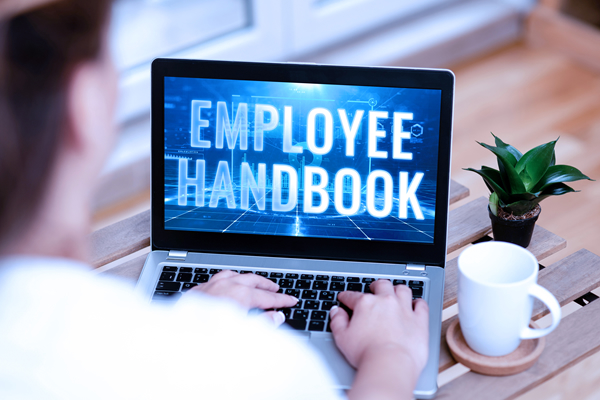By Chemistry Consulting Group
Why Investing in an Employee Policy Manual Benefits Your Organization
Employee Policy Manuals are essential for businesses of all sizes. Whether your team is 10 or 500+, a well-crafted employee manual serves as a critical tool to set clear expectations for workplace behavior, outline your organization’s mission and values, and provide comprehensive policies and procedures.
While Employee Policy Manuals are not legally required, there are mandatory policies that employers must implement, such as a Bullying & Harassment Policy under the BC Workers Compensation Act. Partnering with Chemistry Consulting Group, organizations can create manuals that mitigate risk, consolidate policies, and ensure employees have a single reference point for both required and best-practice procedures.
So, how do you develop one of the most important employment documents aside from an employment agreement? Here are four tips from Chemistry Consulting Group on creating an effective, engaging Employee Policy Manual.
Four Tips on Developing Your Employee Policy Manual
- Naming Your Manual
Employee Handbook? Staff Manual? Culture Book?
The title should resonate with your team and reflect your organizational culture. A casual, fun environment might benefit from a playful title, while a more traditional corporate culture may call for a conventional name. Regardless of the title, focus on clear, accessible language that communicates policies and expectations effectively.
- What to Include
For small businesses, an Employee Policy Manual can focus on core policies and procedures, without overwhelming detail. Your manual should help employees understand workplace norms, company values, and organizational culture.
Typical policies may include:
- Code of Conduct (behavioral guidelines, harassment & discrimination policies, progressive discipline)
- Attendance & Work Hours
- Payroll & Benefits Information
- Paid Leave Entitlements
- Training Programs
- Dress Code & Workplace Etiquette
- Parking & Facilities
- Observed Holidays
- Equal Opportunity Statement
To make your manual even more relevant, consider including policies tailored to your team, such as a Diversity, Equity, Inclusion & Belonging (DEIB) Policy or a Maternity & Parental Leave Top-Up Program. Consulting with Chemistry Consulting Group, a team of certified CPHR HR professionals, can help ensure your manual reflects your unique business needs and regulatory requirements.
- Review and Approval Process
Whether developed internally or with an HR consulting firm like Chemistry Consulting Group, involve leadership from the outset. The owner, GM, or top executive should review and approve the final document.
Solicit input from senior leadership, culture champions, and communication teams to ensure clarity, inclusivity, and alignment with organizational values. Regular revisions help ensure policies remain current and effective.
- Accessibility and Distribution
Your Employee Policy Manual should be shared during onboarding—either before a new employee’s start date or on their first day. Avoid printed copies to prevent outdated versions from circulating. A PDF attachment via email, an employee dashboard, or an internal web portal ensures policies are always accessible and up-to-date.
Most organizations review their Employee Policy Manual annually, but it’s wise to revisit the document whenever there are regulatory or organizational changes. Engage your HR team or an external HR consultant to ensure your policies remain compliant and effective.
Additionally, solicit feedback from new employees after their first review of the manual. Fresh perspectives can help identify areas for improvement.
Chemistry Consulting Group: Your Partner in HR Solutions
Chemistry Consulting Group provides comprehensive HR consulting services to businesses across Canada, with consultants in Vancouver, Victoria, Nanaimo, Toronto, and Montreal, and virtual services available nationwide.
Partnering with Chemistry Consulting Group ensures your Employee Policy Manual not only reflects your organization’s culture and values but also aligns with best practices and legal requirements.

